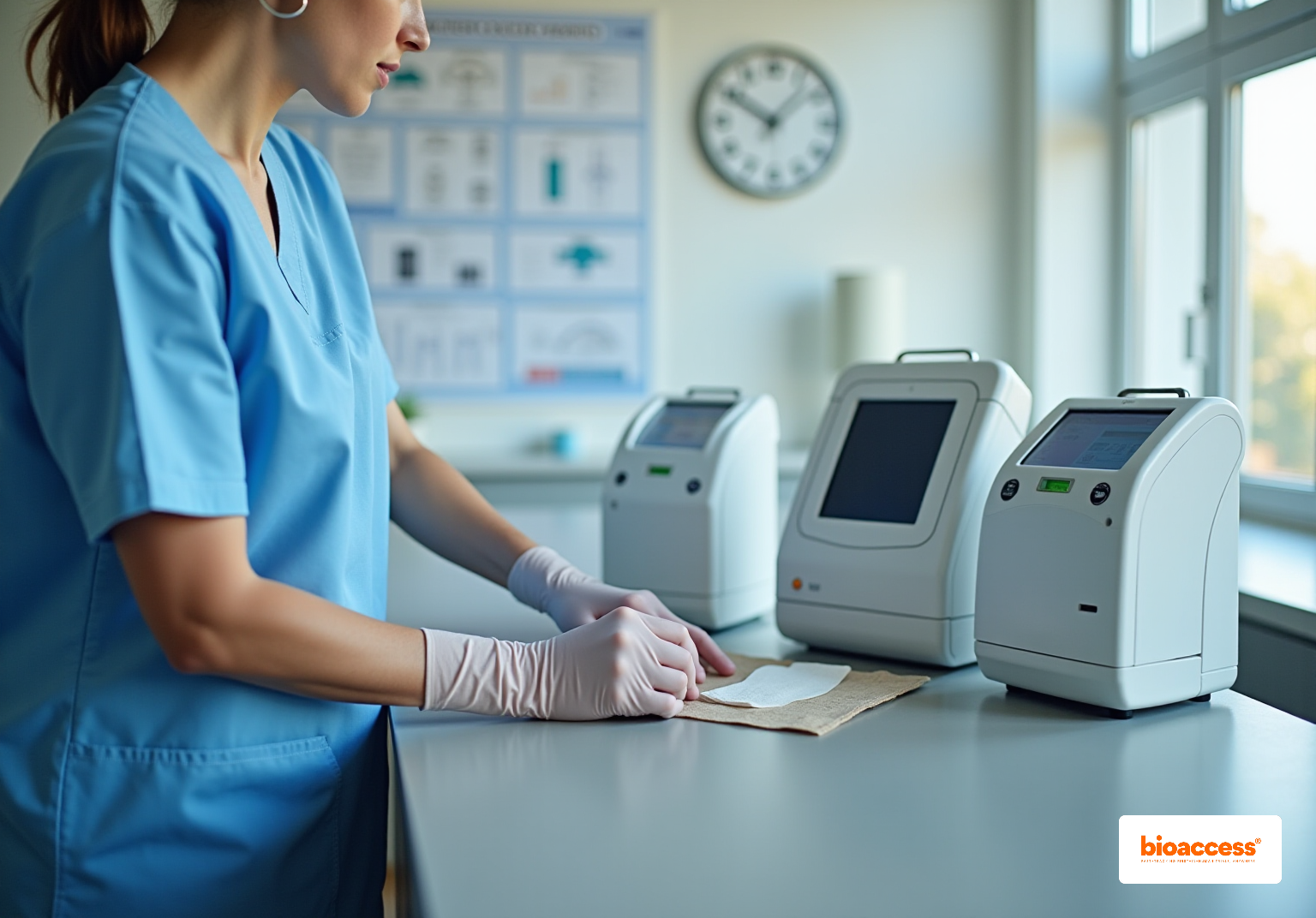


This article provides a comprehensive overview of the classification of medical devices by the FDA, delineating the three primary classes (I, II, and III) according to their risk levels and regulatory requirements. This classification is not merely a bureaucratic formality; it is crucial for manufacturers as it dictates the approval process and market entry strategies. By ensuring safety and efficacy through varying levels of oversight, this framework is particularly significant in collaboration with regulatory bodies such as INVIMA in Colombia.
Understanding the classification of medical devices is essential for navigating the complex landscape of healthcare technology. The FDA categorizes these devices into three distinct classes, each characterized by varying levels of risk and regulatory oversight, which significantly impacts patient safety and market entry strategies. Given the high stakes involved, manufacturers must consider:
This article delves into the intricacies of medical device classification, offering key insights that illuminate the path forward for stakeholders in the medical field.
Healthcare instruments encompass a wide range of tools, apparatuses, machines, implants, and similar items designed for health-related purposes. These instruments play a crucial role in the prevention, diagnosis, treatment, or alleviation of disease or injury. The FDA categorizes these products into classes of medical devices based on their intended application and the level of risk they pose to patients. Understanding this definition is essential, as it highlights a diverse array of items—from basic bandages to complex surgical tools—underscoring the importance of healthcare instruments.
Furthermore, the oversight of clinical trials for these instruments, including:
is imperative for ensuring their safety and effectiveness. Bioaccess® specializes in these clinical trial services, providing the expertise necessary to navigate the complexities of product development and regulatory compliance.
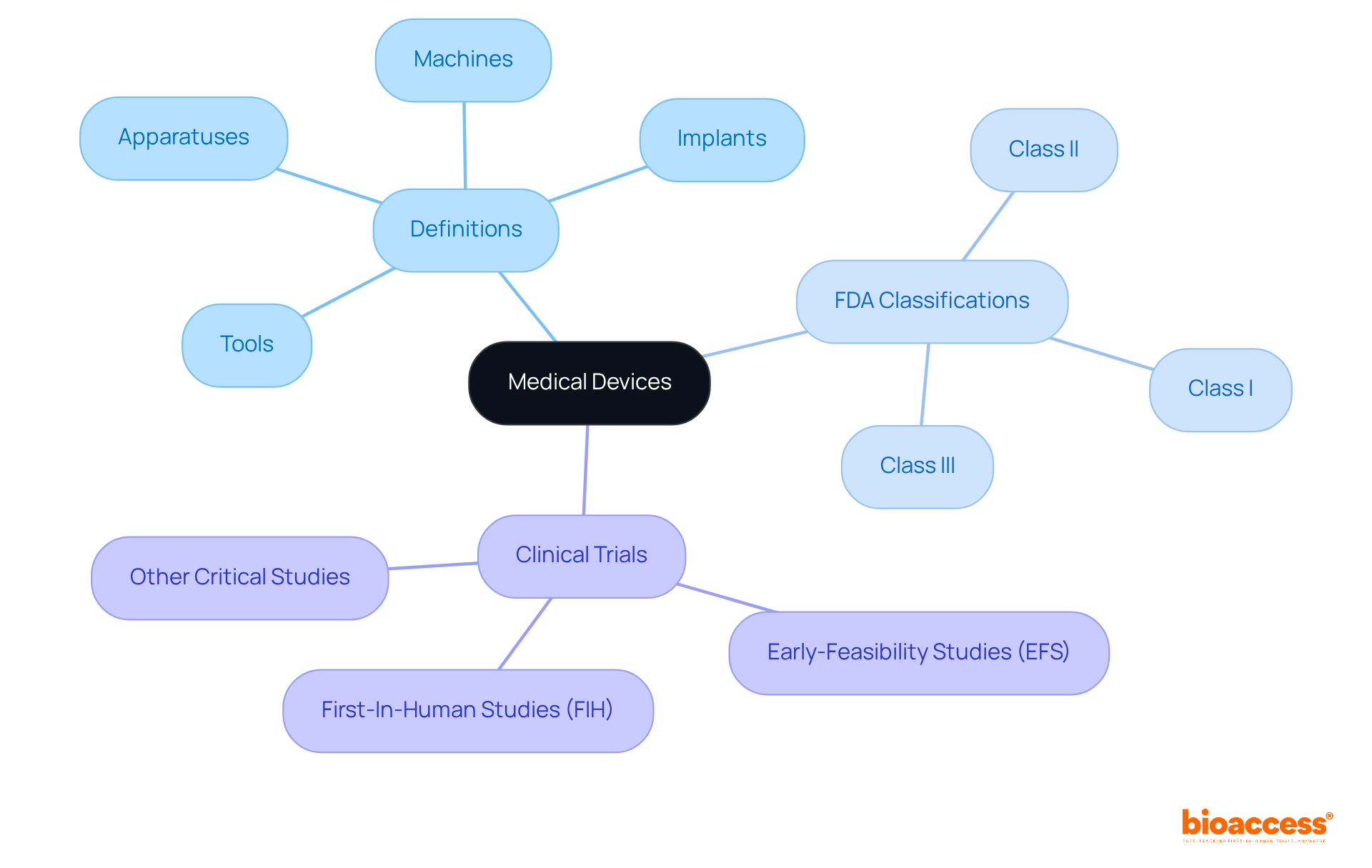
The FDA categorizes classes of medical devices fda into three primary groups: I, II, and III, based on the degree of regulation necessary to ensure their safety and efficacy. Class I products encounter the least oversight, while Class III items, often life-sustaining or life-supporting, require the most stringent supervision.
Understanding the classes of medical devices fda classification system is crucial for manufacturers, as it dictates their approval process and market entry strategies.
In Colombia, INVIMA, the Colombia National Food and Drug Surveillance Institute, is responsible for overseeing health equipment to ensure compliance with health standards. Established in 1992, INVIMA manages the marketing and manufacturing of health products through its Directorate for Medical Devices and other Technologies. This body monitors both pre- and post-market programs and recommends technical standards for quality assurance.
Recognized as a Level 4 health authority by the Pan American Health Organization/World Health Organization, INVIMA's regulatory framework is vital for ensuring the safety, efficacy, and quality of medical products within the Colombian market.
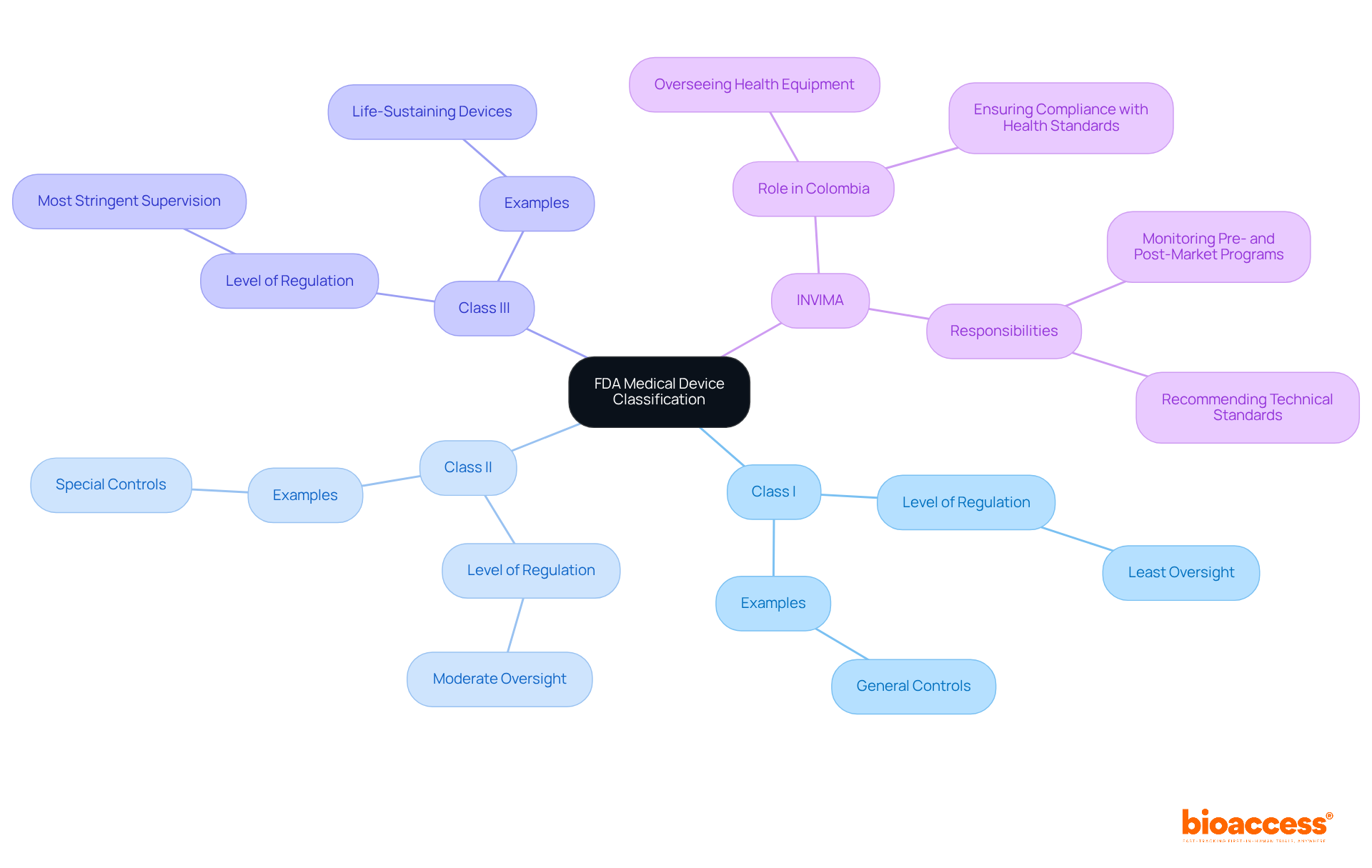
Category I items are classified as low-risk and include products such as bandages and surgical gloves, which are generally exempt from premarket notification. In contrast, Category II instruments—like infusion pumps and diagnostic imaging apparatus—present moderate risk and typically require a 510(k) premarket notification to demonstrate substantial equivalence to existing devices. Class III products, encompassing pacemakers and implantable defibrillators, are deemed high-risk and necessitate a Premarket Approval (PMA) process. This process involves rigorous testing and clinical trials to ensure their safety and efficacy. Understanding the classes of medical devices FDA classification system is crucial for manufacturers aiming to navigate the compliance landscape effectively.
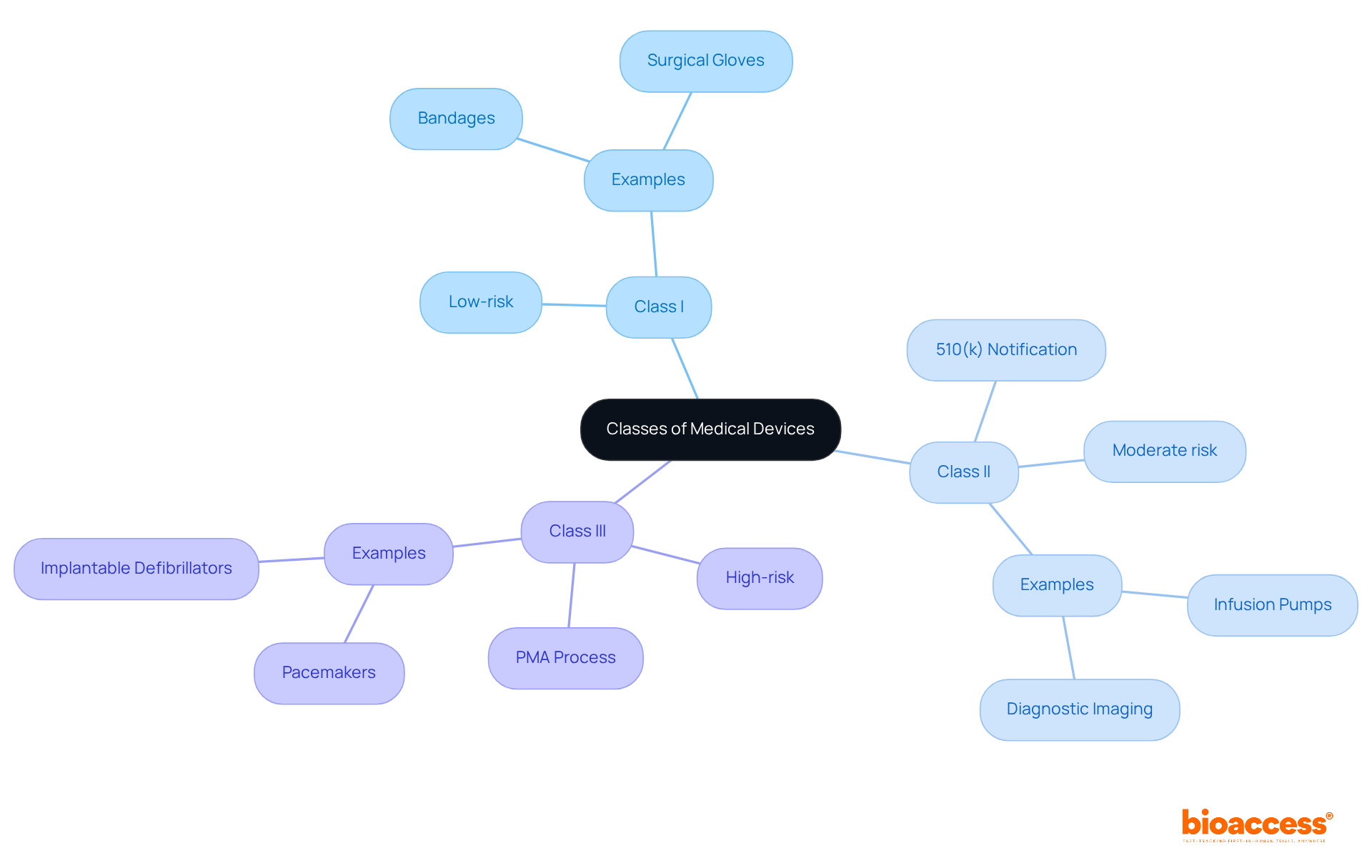
The categorization of classes of medical devices FDA is vital for several reasons. Firstly, it defines the regulatory pathway a manufacturer must navigate, significantly influencing the time and resources necessary for product development and market entry. In Colombia, the INVIMA (Colombia National Food and Drug Surveillance Institute) is instrumental in this process, overseeing the marketing and manufacturing of health products. As a Level 4 health authority recognized by the Pan American Health Organization/World Health Organization, INVIMA ensures that healthcare products adhere to stringent safety, effectiveness, and quality standards.
Within INVIMA, the Directorate for Medical Equipment and other Technologies specifically regulates medical instruments, monitors pre- and post-market programs, and recommends technical standards for manufacturing, marketing, surveillance, and quality assurance. Secondly, the classification directly affects the level of scrutiny an apparatus will face during the approval process, which can impact patient safety and efficacy. For instance, a Class III device may require extensive clinical trials, while a Class I device can be marketed with minimal barriers.
Grasping the classes of medical devices FDA enables manufacturers to align their products with market demands and regulatory expectations, ultimately facilitating successful commercialization. The strategic significance of classification is further emphasized by the oversight provided by INVIMA, ensuring compliance with established technical standards.
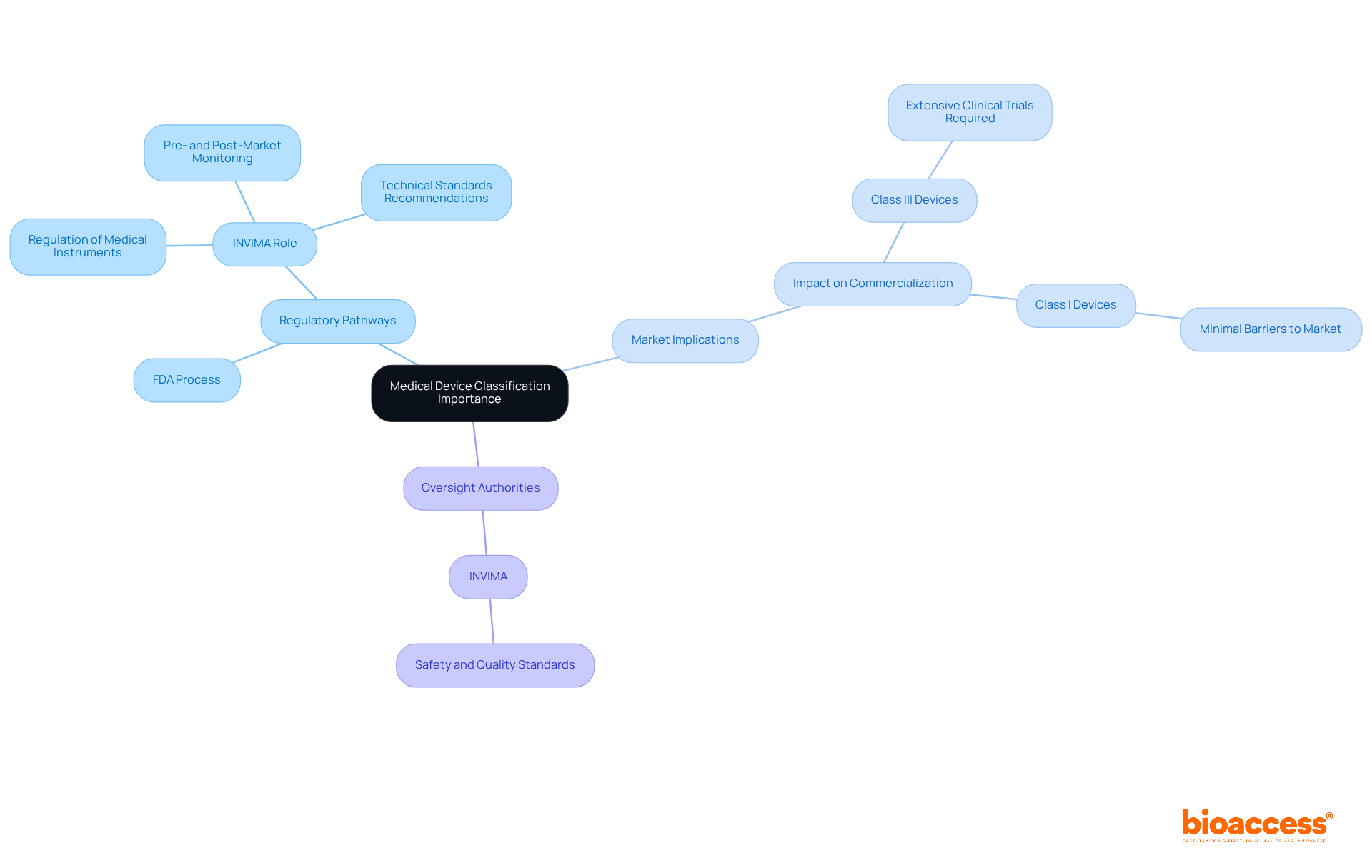
Understanding the classes of medical devices regulated by the FDA is essential for ensuring the safety and efficacy of healthcare products. This classification system dictates the level of oversight required for each device and plays a critical role in the regulatory pathways manufacturers must navigate. From low-risk Class I devices to high-risk Class III products, the implications of these classifications are significant for both patient safety and market access.
The classification system is crucial, as it illustrates how Class I devices, such as bandages, typically face minimal regulation, while Class III devices, like pacemakers, undergo rigorous testing and approval processes. Furthermore, the role of INVIMA in Colombia underscores the global significance of adhering to regulatory standards, ensuring that medical devices meet stringent safety and quality requirements.
Ultimately, a firm grasp of the FDA's medical device classification empowers manufacturers to align their product development strategies with regulatory expectations. This understanding is not only vital for compliance but also for fostering innovation in medical technology. By prioritizing safety and efficacy through informed classifications, the healthcare industry can advance, ultimately benefiting patients and healthcare providers alike.
What are medical devices?
Medical devices are healthcare instruments that include a wide range of tools, apparatuses, machines, implants, and similar items designed for health-related purposes. They are crucial for the prevention, diagnosis, treatment, or alleviation of disease or injury.
How does the FDA categorize medical devices?
The FDA categorizes medical devices into classes based on their intended application and the level of risk they pose to patients.
Why is it important to understand the definition of medical devices?
Understanding the definition of medical devices is essential as it highlights the diverse array of items, from basic bandages to complex surgical tools, and underscores the importance of healthcare instruments.
What types of clinical trials are involved in the oversight of medical devices?
The oversight of medical devices includes various types of clinical trials, such as Early-Feasibility Studies (EFS), First-In-Human Studies (FIH), and other critical studies.
What services does Bioaccess® provide related to medical devices?
Bioaccess® specializes in clinical trial services, offering expertise necessary to navigate the complexities of product development and regulatory compliance for medical devices.